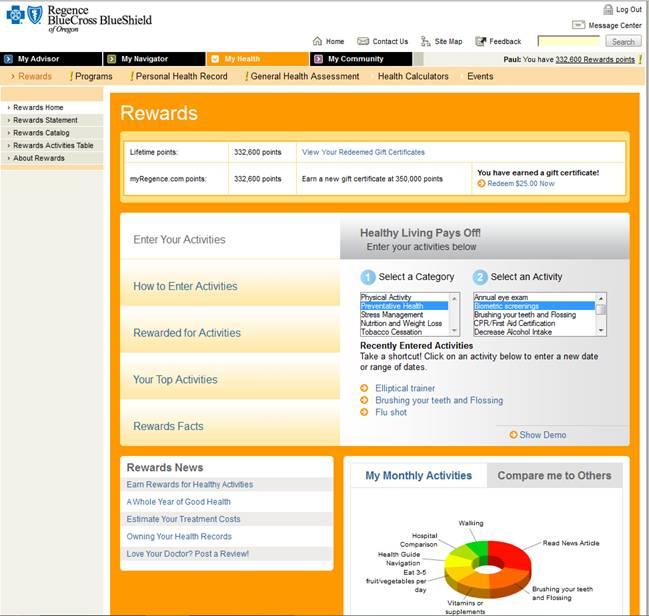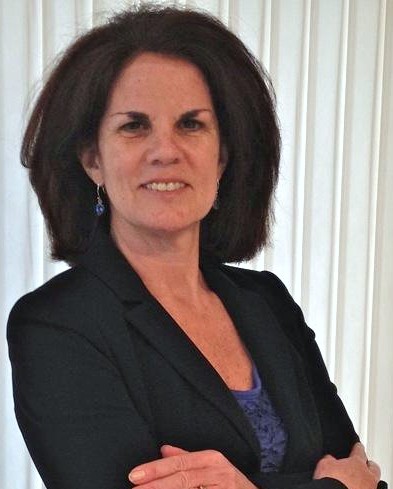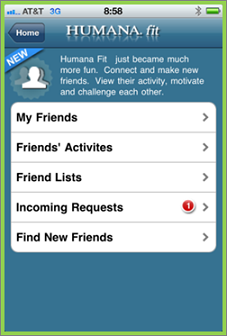Entries in mobile web (4)
Connected Mobile Health Apps to Sustain Consumer Engagement
 March 30, 2012
March 30, 2012  World Congress Leadership Summit on Mobile Health, July 25-27th in Boston
World Congress Leadership Summit on Mobile Health, July 25-27th in Boston
Over the past three years, I have participated in this interesting event by running a workshop or panel.
- Connecting multiple mobile apps to personalize the care shopping, decision making and care collaboration experience.
- Connecting mobile into chronic care programs with integrated tools for self management, shared decision making and coaching support.
- Connecting mobile into wellness programs with capabilities to harness social community influence, digital coaching and incentives for motivation.
- Dan Brostek, Head of Member and Consumer Engagement, Aetna
- Michael Yetter, Director, eBusiness, Independence Blue Cross
- Nick Martin, VP Innovation and R&D, UnitedHealth Group
- Patrick Feeney, Director, Mobile and Emerging Technologies, Blue Cross Blue Shield Illinois
Regence Reaches Step 3 on their Consumer Engagement Path
 February 14, 2012
February 14, 2012  Regence Program Rewards Transformational Activities
Regence Program Rewards Transformational Activities
Regence started on a new path to consumer engagement back in 2005.
After seeing a recent presentation outlining their consumer engagement framework, I reached out to Torben Nielsen, VP, eBusiness Strategies and Services at Regence to learn more. Torben shared their past journey as well as their future direction with me.
Here are the 4 steps along their consumer engagement path. Regence is currently at Step 3 and has a conceptual view of their next step which will continue to evolve as the market landscape fills in around them.
Consumer Engagement Step 1: Know Me
Regence’s first step focused on the passive cardholder, giving them value as they logged in. The cardholder saw all of their claims, benefits and provider information. This was back in 2005. Prior to that “it was not a good experience” since the member only saw some of their claims information and the list of providers “did not even indicate whether each one was inside or outside their network”.
Consumer Engagement Step 2: Engage Me
Beginning in 2008, Regence decided that they needed to get to know their members in order to effectively engage them.
Instead of linking the member over to their health or wellness program vendor’s website, Regence decided to keep the member within their portal to capture their online behavior.
Around that time, Regence launched their Rewards Program which awarded points to members for “tranformational activities”. These activities were rewarded because they “informed, empowered and educated the consumer”, including looking up content around a health issue or participating in a wellness program. Regence decided not to reward members for “transactional activities” such as looking up a claim or searching for a provider. Regence really needed to keep the member on their portal to track their online behavior in order to reward them.
Next Regence started their email program, sending out relevant electronic communications to bring members back to the site. Although many health plans have an interest in emailing members, I hear all the time that they do not have their email addresses. Regence collects the member’s email address during their site registration process. “We can’t engage with out email. It would be a missed opportunity to get in front of the member”, Torben emphasizes.
In addition to generating additional portal traffic, health plan communications can also strengthen their member’s satisfaction scores, which is more important now than ever with the increased market competition.
Consumer Engagement Step 3: Connect Me
Over the past two to three years, Regence has been moving faster down the path with consumers.
“Connect Me” goes beyond the “member to health plan” relationship. According to Regence, this also includes strengthening the “member to member” bond through social community and the "member to their care team" bond through ACO efforts.
One important way for Regence to strengthen the “member to member” relationship is by getting consumers to contribute more content online through conversations, ratings/reviews and suggesting local events in their geography.
Another aspect of “Connect Me” addresses the cross communication channel experience since members are increasingly accessing and engaging through their mobile devices. “We’re connecting the data that we’re sitting on to provide a more personalized experience for our members”, explains Torben.
Consumers are engaging with Regence!
- 67,000+ patient reviews have been submitted by members, of which 90% are favorable (i.e. the member would recommend the physician/facility).
- 63,000+ posts in the Community section of myRegence.com, written by more than 6,000 unique content creators.
- 346,000+ have opted- in for member electronic communications (e.g. updates and alerts, account information, etc)
- 260,000+ subscribers signed up to receive the bi-weekly myRegence.com email newsletter
Consumer Engagement Step 4: Partner with Me
As they look down their Consumer Engagement path, Regence has determined where they want to be directionally. Regence wants to be relevant to the consumer’s every day life. Something consumers need to check as part of their daily routine. Their starting place to look for information to meet all of their health needs.
Although it is challenging to know exactly where the market is going, Regence will remain in touch with their users to help guide the way.
In fact, Regence has over 400 users that help advise them by providing ongoing feedback to potential directions. [Note: Innovative companies have consumer advisory boards as a best practice. Increasingly, these consumer advisory boards are managed in a private online area and the insight captured is used to guide product and marketing decisions.]
Regence is co-creating with this growing group of consumers to define and refine online capabilities. When Regence asked for feedback about “patient reviews”, members felt they needed to see more than the reviewer’s screen name. Users wanted “the ability to connect with their peers in order to get advice when selecting a provider”. In the latest patient review experience, the screen name is linked to the reviewer’s Community profile page, where to learn more about who they are, where they’re from, what they do for a living and members have an the opportunity to make a friend request.
Regence’s Results Realized
Due in large part to Regence’s consumer engagement strategies, myRegence.com experienced the following results in 2011 over 2010:
- 30% increase in the cumulative number of content creators (i.e. those who have left a patient review, posted in Community or both).
- 88% jump in the number of $25 gift card redemptions through the Rewards program
- 76% increase in the Consumer Engagement Index (CEI) which measures the user adoption of transformational features
- 26% open rate for targeted email campaigns, nearly 2x the industry benchmark of 14%
Regence has also noticed that their segmentation efforts for email have been effective in engaging consumers. For example, by sending a Patient Review email to previous reviewers, Regence realized a 38% open rate.
As Regence moves onto step 4 in Consumer Engagement, they are conceptualizing new ways to reach out to their members with relevant information from their plan, community and care team. And they will be innovating with and listening to their users throughout their journey.
Personalizing the Mobile Experience to Drive Consumer eHealth Engagement
 August 8, 2011
August 8, 2011 At the recent World Congress mHealth Summit, I led a panel called “Personalizing the Mobile Experience to Drive Consumer Engagement”.
Why is mobile so important and why does it need to be incorporated into all consumer health & wellness engagement strategies?
Pew Research’s May report found that “83% of US adults have a cell phone, and 42% of them own a smart phone”. As mobile phone ownership grows so does the consumers’ expectations about using this device to plan, manage and monitor their personal lives. Consumer- driven companies across financial services, retail, media and entertainment are designing creative ways to engage the consumer through a valuable mobile experience.
Within healthcare, mobile is a cost effective and efficient way to not only generate but also sustain consumer engagement.
Here are several strategic considerations that I presented while introducing the panel topic.
1. Segmentation & Customization. Once a company moves beyond enabling mobile access for all target users, they must think carefully about the varying needs and mobile usage profiles of their different consumer segments. Consider consumer segments which have high mobile technology usage.
Pew Research found that over 87% of minorities such as African Americans and Hispanics have mobile phones and they are more likely than whites to send/receive text messages, use the internet on their mobile phones and have smart phones. What about a mobile texting program educating them about their health condition or motivating them to engage in preventative care?
Frequent business travelers stay connected to their company, customers and family through their mobile phones and tablets. A recent Columbia University study showed the association of business travel and cardiovascular disease. According to the study, this may be caused by their poor diet, lack of exercise and sleep as well as stress. Imagine how mobile can be used to help these travelers manage their health issues and make better decisions while on the road.
Over 75% of teens have a mobile phone and more than half are texting every day based on Pew research. Can you send mobile messages to teens to educate them about staying fit or informing them about ways to manage their diabetes? There is also opportunity on the mobile apps front. I recently participated on a project envisioning mobile solutions to support the mental health of (college) students to avoid depression.
How is Highmark approaching segmentation? Highmark utilizes Forrester’s Technograph Segmentation to prioritize their mobile initiatives. Panelist Lisa Fitting, Director Client Engagement mentioned that when Highmark conducted segmentation research across their member base, two key segments emerged-- “Connectors who use their mobile phone for work and are productivity- oriented” and “Communicators who regularly use SMS” and often use other digital communications. Highmark is using this insight to define mobile initiatives based on these preferences. They also plan to come out with mobile applications targeting specific needs such as “fitness, weight management, diabetes, medication”.
2. Multi-Channel Experience. As consumers move about their daily life, they move from channel to channel. Teens put down their mobile phones when they pull out their laptop computers. When they are through interacting via their computer, it is important that their next mobile interaction reflect their latest online activities.
Humana conducts user experience research to better understand how different types of users interact with their Humana Fit application through their mobile phones and computers. Panelist Tony Tomazic, Director of Consumer Innovation at Humana explains “we understand the strengths of mobile. Through research, we have learned how consumers want to use their mobile phone for tracking and communications regarding personal health and fitness (e.g. saving episodes of activity, receiving reminders and alerts), whereas consumers prefer to use their computers to manage more complex and visual planning of their goals and gather information from their other external devices.”
3. Personalization in Context. While carrying their mobile devices, consumers can use them to receive reminders, review educational messages, track information (e.g. mood, pain levels, fitness and nutrition) as well as search for information to make decisions while on the go.
"Healthline brings both personalization and contextualization to the consumer", explains panelist Ryan Tarzy, VP Business Development. “Aetna members view search results that are both contextual to the issue they are researching (e.g. diabetes), but also personalized based upon their personal health record, location, and covered benefits”.
As you develop your mobile health and wellness strategy, think about the needs of your various consumer segments and their mobile technology profiles. Consider their multi-channel experience of which mobile is only a part. And determine how you can design a mobile strategy which brings new value to the consumer through personalization within the context of their current health, plan coverage and location.
Have you read the Seven Mobile Health Engagers?
Generating Mobile Engagement Through Consumer Segmentation, Crowd Sourcing and Personalization
 June 14, 2010
June 14, 2010  World Congress Leadership Summit on Mobile Health, July 29th & 30th, Boston
World Congress Leadership Summit on Mobile Health, July 29th & 30th, Boston
Healthcare organizations are taking advantage of the consumer’s strong demand for smart phones and mobile health apps. They are piloting new health initiatives through SMS (text), Mobile Web and Mobile Applications and learning about the opportunities and barriers to accelerate adoption and usage.
Industry leaders understand the need to tailor their mobile offerings to specific consumer segments and to personalize the experience to sustain engagement.
During our session, you will learn how our panelists are utilizing mobile to enable care access and compliance, deliver health education as well as influence and track health behaviors. They will show examples of their mobile health initiatives and share insights they’ve gained from segmentation, personalization and crowd sourcing. The panelists will also offer their vision for mobile health opportunities in the near future.
You will gain a unique perspective from companies on this panel which are bringing mobile health offerings to consumers directly as well as through the healthcare delivery and health plan channels. As you will see, each business channel has its own sources of value to engage the consumer.
Facilitator:
Sherri Dorfman, MBA, CEO, Consumer eHealth Engagement Specialist, Stepping Stone Partners
Panelists:
- Bud Flagstad, Vice President, Strategic Initiatives, UnitedHealth Group
- Julie Kling, Mobile Strategy Group, Humana
- Tim Kieschnick, Director, User Experience Internet Services Group, Kaiser Permanente
- Alexandra Pelletier, Team Lead, Program and Product Development, Center for Connected Health, Partners HealthCare System
- Benjamin Rubin, CTO and Co-Founder, Zeo Inc.



